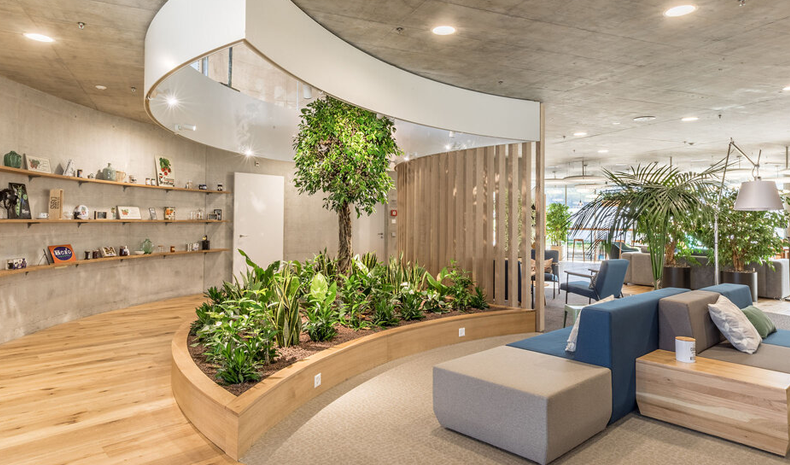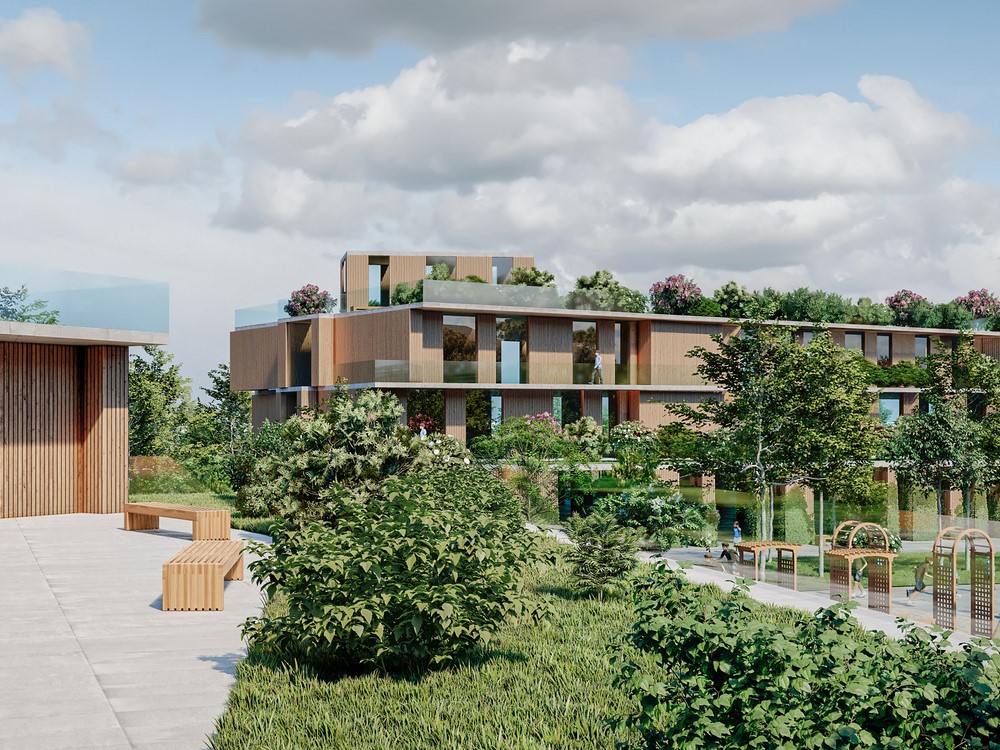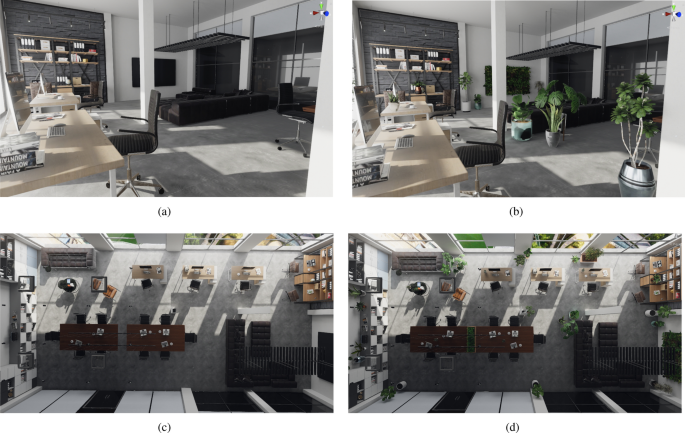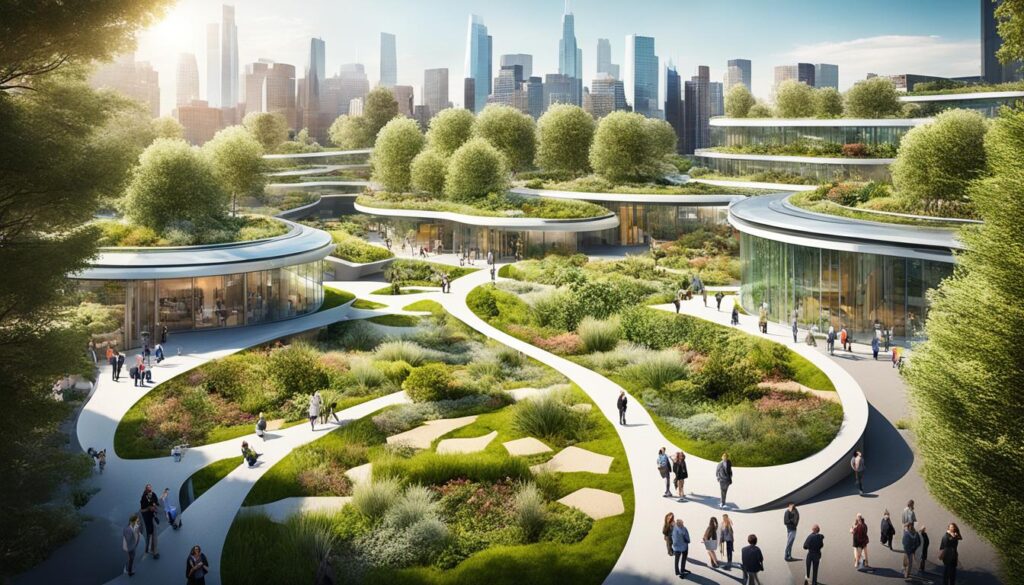Unlock the Benefits of Responsive Biophilic Design Technologies
In an increasingly urbanized world, the concept of **biophilic design** represents a crucial approach to enhancing our connection with **nature** through constructed environments.
This discussion will examine the principles of **biophilic design**, its significance, and the **innovative responsive technologies** that are transforming our interaction with our surroundings.
It will explore how these technologies are revolutionizing **building design** and **urban planning** while addressing the **challenges of implementation**.
We can envision a future where **nature** and **technology** coexist harmoniously, fostering a **sustainable** and enriching living experience.
What is Biophilic Design?
Biophilic design represents a progressive approach in architecture and urban planning that aims to strengthen the connection between individuals and the natural environment, thereby promoting health and well-being through the incorporation of natural elements within built spaces.
This design methodology underscores the significance of integrating features such as natural light, indoor vegetation, and sustainable materials, all of which contribute to the creation of environments aligned with human-centered design principles.
By embedding these elements, biophilic design seeks to enhance user experience and spatial quality while simultaneously minimizing ecological footprints and encouraging responsible environmental stewardship.
What are the Principles of Biophilic Design?
The principles of biophilic design encompass a range of strategies that emphasize the fundamental relationship between nature and the built environment, including spatial organization, natural patterns, and user adaptability. These principles aim to evoke sensory engagement and foster a sense of connection to the natural world.
By incorporating elements such as natural light, which not only enhances psychological well-being but also improves productivity, this design methodology aspires to create spaces that resonate with human emotions and environmental behavior.
Through thoughtful landscape integration, biophilic design highlights the significance of surrounding buildings with greenery, thereby promoting community engagement and encouraging environmental stewardship.
These approaches transform physical spaces into dynamic environments that support health and well-being, ultimately enabling individuals and communities to feel more grounded, connected, and inspired by the inherent beauty of nature.
Why is Biophilic Design Important?
Biophilic design plays a vital role in the creation of sustainable environments that enhance human well-being while mitigating adverse environmental impacts. This approach is an essential component of contemporary architecture and urban ecology.
By prioritizing the connection to nature, biophilic design fosters resilience, encourages positive design principles, and contributes to the overall health and well-being of communities. Moreover, as urban areas continue to expand, the integration of biophilic elements can substantially decrease the ecological footprint of urban landscapes.
What are the Benefits of Biophilic Design?
The advantages of biophilic design are numerous, significantly enhancing health and well-being by improving indoor air quality, increasing access to natural light, and incorporating indoor plants, all of which contribute to an improved user experience.
By fostering a connection to nature, biophilic design not only enhances aesthetic appeal but also supports sustainability and resilience within architectural practices.
This innovative approach positively influences performance metrics related to both mental and physical health, resulting in a notable reduction in stress and anxiety levels.
Environments that prioritize natural elements often experience increased productivity, as individuals feel more invigorated and focused.
The emphasis on resource efficiency within this design philosophy leads to reduced operational costs while minimizing environmental impact, thereby ensuring that organizations thrive while contributing to ecological preservation.
By promoting a harmonious environment, biophilic design fosters community bonding and enhances overall satisfaction, making it an essential consideration in contemporary architecture.
What are Responsive Biophilic Design Technologies?
Responsive biophilic design technologies signify a significant advancement at the confluence of architecture and technology, emphasizing the development of adaptive systems that address the needs of occupants while strengthening their connection to nature.
These systems employ smart technology to optimize various elements, including natural light, thermal comfort, and acoustics, with the ultimate objective of enhancing user experience and promoting sustainability within built environments.
How do Responsive Biophilic Design Technologies Work?
Responsive biophilic design technologies utilize advanced methods to create dynamic environments that adapt to changing conditions, thereby optimizing energy efficiency and enhancing user interaction with nature. These systems may incorporate automated controls for natural ventilation, lighting adjustments based on occupancy, and user interfaces that enable occupants to engage with their physical environments in a more meaningful manner.
By integrating elements such as living walls and water features, these innovations cultivate sensory experiences that connect individuals to their surroundings while simultaneously reducing the ecological footprint of buildings. The design effectively responds to environmental cues, maximizing natural light and minimizing energy consumption, all while promoting the well-being and productivity of users.
This approach not only transforms spaces into more responsive ecosystems but also fosters a deeper appreciation for nature, bridging the gap between contemporary architecture and elemental organic landscapes.
What are the Different Types of Responsive Biophilic Design Technologies?
Various types of responsive biophilic design technologies are available that seek to integrate environmental sustainability with user-centric functionalities. These include adaptive architecture, automated climate control systems, and dynamic facades.
Such technologies are engineered to facilitate seamless interactions between occupants and their environment, thereby enhancing the overall spatial experience.
For example, adaptive architecture employs smart technology to adjust lighting and ventilation in accordance with occupancy levels and the time of day, thereby promoting energy efficiency.
Automated climate control systems incorporate ecological design principles, managing indoor environments in real-time to optimize comfort while minimizing resource consumption.
Similarly, dynamic facades utilize materials that respond to environmental conditions, such as temperature and sunlight, to actively regulate indoor climates.
These innovations not only enhance aesthetic appeal but also foster a deeper connection to nature, demonstrating how responsive design can transform urban living spaces into more harmonious environments.
What are the Applications of Responsive Biophilic Design Technologies?
The applications of responsive biophilic design technologies extend across multiple sectors, profoundly influencing both building design and urban planning by fostering environments that emphasize sustainability and the well-being of users.
In the context of building design, these technologies promote energy efficiency and enhance indoor environmental quality. In urban planning, they play a pivotal role in advancing urban ecology and encouraging community engagement.
How are Responsive Biophilic Design Technologies Used in Building Design?
In building design, responsive biophilic design technologies are utilized to create environments that promote a harmonious relationship between occupants and the natural surroundings. These technologies incorporate elements such as natural ventilation, daylighting, and biophilic features, including indoor plants. By doing so, they enhance energy efficiency and occupant satisfaction while minimizing the environmental impact associated with construction.
Integrating these elements not only improves the quality of the space but also supports adaptive reuse projects, revitalizing existing structures while preserving their historical significance. For example, the transformation of an old warehouse into office space may include the installation of extensive green walls and the use of sustainable materials, thereby promoting environmental stewardship.
The inclusion of greenery contributes to air purification and reduces stress levels among occupants, ultimately enhancing overall well-being.
Furthermore, responsive technologies such as smart glass can optimize natural light without sacrificing privacy, further elevating the quality of the internal environment and fostering a genuine connection with nature.
What are the Benefits of Using Responsive Biophilic Design Technologies in Buildings?
The advantages of implementing responsive biophilic design technologies in buildings are numerous and varied, encompassing enhanced user experience, improved health outcomes, and increased sustainability and energy efficiency. These technologies optimize indoor environments through the utilization of natural light and ventilation while simultaneously reducing the overall ecological footprint of structures.
By integrating elements such as greenery, water features, and natural materials, these design strategies not only promote psychological well-being but also mitigate stress levels among occupants. Research has demonstrated that environments enriched with biophilic elements can lead to heightened productivity and creativity, which are particularly significant in workplace and educational settings.
Moreover, performance metrics related to air quality and thermal comfort are improved, resulting in spaces that align with sustainable practices and energy efficiency objectives. The integration of responsive biophilic design fosters a comprehensive approach to building design, ultimately benefiting both the health of inhabitants and the environment.
How are Responsive Biophilic Design Technologies Used in Urban Planning?
In urban planning, responsive biophilic design technologies are employed to develop urban spaces that prioritize ecological design and enhance community engagement, ultimately promoting an improved quality of life for residents. By integrating green infrastructure, open spaces, and natural landscapes, these technologies advance social sustainability and environmental stewardship.
These innovative methodologies also emphasize the incorporation of landscapes that reflect natural ecosystems, thereby enhancing urban ecology and improving resilience in the face of climate challenges. For example, cities around the globe are increasingly adopting green roofs and vertical gardens, effectively transforming previously underutilized spaces into thriving habitats that support biodiversity.
Such strategies not only mitigate urban heat but also contribute to rainwater management, underscoring the interconnectedness between urban design and nature. This harmonious relationship fosters a sense of responsibility among residents, reinforcing their connection to the environment and promoting sustainable practices in their daily lives.
What are the Benefits of Using Responsive Biophilic Design Technologies in Urban Planning?
The integration of responsive biophilic design technologies in urban planning offers substantial benefits, significantly contributing to community well-being, enhancing biodiversity, and improving urban health.
These technologies facilitate the development of resilient urban environments that encourage social interaction and foster a strong sense of place.
By incorporating natural elements into the urban landscape, these design approaches cultivate a deeper connection between residents and their environment, promoting active engagement within the community. This increased interaction not only enhances local pride but also encourages sustainable behaviors, which are crucial for advancing environmental health.
The implementation of green spaces, water features, and vegetation in urban areas aids in regulating temperatures and improving air quality, thereby creating a more enjoyable and healthful living environment. Ultimately, aligning urban design with natural systems enhances placemaking, ensuring that cities develop into vibrant ecosystems that benefit all inhabitants.
What are the Challenges of Implementing Responsive Biophilic Design Technologies?
The implementation of responsive biophilic design technologies presents several challenges, including technological complexities, cost factors, and barriers to adoption within the construction industry.
As the integration of technology into architectural practice continues to evolve, it is essential to understand these challenges in order to promote sustainable and resilient design solutions.
What are the Technical Challenges?
Technical challenges associated with responsive biophilic design technologies frequently emerge from the complexities involved in integrating advanced systems into existing structures. These challenges can adversely affect performance metrics and impede design innovation.
Effectively addressing these issues necessitates comprehensive site analysis and a profound understanding of adaptive systems.
The careful selection of appropriate materials is essential to ensure that the integration of technology not only enhances aesthetic appeal but also promotes the sustainability of the architecture. For example, the use of bio-based materials can improve thermal comfort while reducing environmental impact.
Furthermore, these biophilic strategies can harness real-time data collection through smart sensors, enabling architects to create environments that are more adaptable and responsive.
Establishing cross-disciplinary collaborations among architects, engineers, and materials scientists is crucial for overcoming these challenges and developing a coherent framework that harmonizes biophilic design principles with contemporary technological advancements.
What are the Cost Considerations?
Cost considerations significantly influence the adoption of responsive biophilic design technologies, impacting decision-making processes in sustainable architecture and urban planning. It is essential for stakeholders to balance initial investments with long-term benefits, such as energy efficiency and reduced ecological footprints.
For many architects and developers, the financial implications associated with these design technologies may initially seem overwhelming. However, a comprehensive life-cycle assessment reveals the long-term economic sustainability of such investments. Upfront costs related to the implementation of these systems can be offset by potential savings in energy expenses, maintenance costs, and even enhanced occupant health, which can contribute to improved performance metrics.
Furthermore, by enhancing the overall aesthetic and functionality of spaces, property values are likely to increase, thereby making a compelling case for the investment. Ultimately, a thorough understanding of these financial dynamics facilitates well-considered choices that extends beyond immediate financial considerations, supporting a more sustainable future.
What are the Barriers to Adoption?
Barriers to the adoption of responsive biophilic design technologies frequently arise from a lack of awareness, misconceptions regarding costs, and insufficient community engagement in the design process. Addressing these barriers is essential for fostering acceptance and promoting the widespread implementation of biophilic principles.
To tackle these challenges, it is crucial to educate stakeholders about the long-term benefits of such technologies, particularly in terms of enhancing social sustainability and positively influencing environmental behavior.
Utilizing workshops and community forums can effectively bridge the knowledge gap, enabling individuals to witness firsthand the positive impact on community well-being.
Demonstrating cost-effectiveness through pilot projects can help dispel myths concerning financial burdens, illustrating how responsive biophilic designs can ultimately reduce operational costs and promote healthier living environments.
As communities become more informed and engaged, the pathway to integrating these sustainable practices becomes increasingly clear, paving the way for a more resilient future.
What is the Future of Responsive Biophilic Design Technologies?
The future of responsive biophilic design technologies appears highly promising, as continuous advancements in smart technology and materials science are positioned to transform the ways in which we design and engage with our environments.
With the increasing demand for sustainable architecture and urban planning, it is anticipated that these technologies will further develop, thereby enhancing their contributions to the improvement of health, well-being, and ecological balance.
What are the Potential Advancements in Technology?
Potential advancements in technology related to responsive biophilic design encompass the development of more sophisticated smart systems, enhanced digital fabrication techniques, and the utilization of organic materials that adapt to environmental changes. These innovations are poised to expand the boundaries of design thinking and sustainability within the built environment.
The integration of adaptive systems can result in structures that not only respond to climatic variations but also engage meaningfully with their inhabitants, thereby fostering a deeper connection with nature.
By incorporating natural patterns into urban planning, architects have the opportunity to create spaces that reflect the rhythms and textures found in the natural world, ultimately enhancing well-being and productivity among users.
Experiential design tools can facilitate innovative approaches to public spaces, creating dynamic environments that address community needs while promoting ecological mindfulness.
Collectively, these advancements hold the potential to transform not only individual buildings but also entire cities into harmonious ecosystems.
How Will Responsive Biophilic Design Technologies Impact the Environment and Society?
Responsive biophilic design technologies have the potential to significantly influence both environmental and societal outcomes by promoting sustainability, enhancing biodiversity, and fostering community well-being.
As these technologies gain traction, they are poised to contribute to the creation of healthier urban environments while facilitating a deeper connection between individuals and nature.
By integrating natural elements into urban landscapes, these innovative strategies can help mitigate the adverse effects of urbanization, including pollution and habitat loss. Rather than perceiving nature as a distinct entity separate from our built environments, communities are encouraged to adopt approaches that interweave natural processes into the very fabric of urban life.
This integration not only acts as a vehicle for environmental stewardship but also cultivates a culture of community engagement, wherein residents collaborate on sustainability initiatives.
The implementation of responsive biophilic design has the potential to lead to resilient communities that thrive economically while nurturing social relationships and prioritizing ecological health.
Frequently Asked Questions
What is Responsive Biophilic Design Technologies?
Responsive Biophilic Design Technologies is an approach to designing spaces that incorporate natural elements and systems to create a healthier and more sustainable environment.
What are the key principles of Responsive Biophilic Design Technologies?
The key principles of Responsive Biophilic Design Technologies include incorporating natural elements such as light, air, water, and vegetation into the design, providing a connection to nature, and promoting a healthy and sustainable environment.
How does Responsive Biophilic Design Technologies benefit the environment?
Responsive Biophilic Design Technologies benefit the environment by reducing energy consumption, improving air and water quality, and promoting biodiversity.
What are some examples of Responsive Biophilic Design Technologies?
Examples of Responsive Biophilic Design Technologies include green roofs, living walls, natural lighting systems, and biodegradable building materials.
How can Responsive Biophilic Design Technologies improve human health and well-being?
Responsive Biophilic Design Technologies can improve human health and well-being by reducing stress, increasing productivity, and promoting physical and mental well-being through a connection to nature.
What are some challenges in implementing Responsive Biophilic Design Technologies?
Some challenges in implementing Responsive Biophilic Design Technologies include higher initial costs, limited availability of materials, and lack of knowledge and understanding among designers and builders.

I’m Bruno, an architect with a deep passion for Biophilic Design in Urban Architecture. Throughout my career, I’ve focused on integrating natural elements into urban planning, and I created this site to share my insights and foster a deeper understanding of how biophilic principles can significantly enhance urban living. Dedicated to sustainable development, I continually explore innovative design solutions that promote both environmental and human well-being in city landscapes.














Publicar comentário